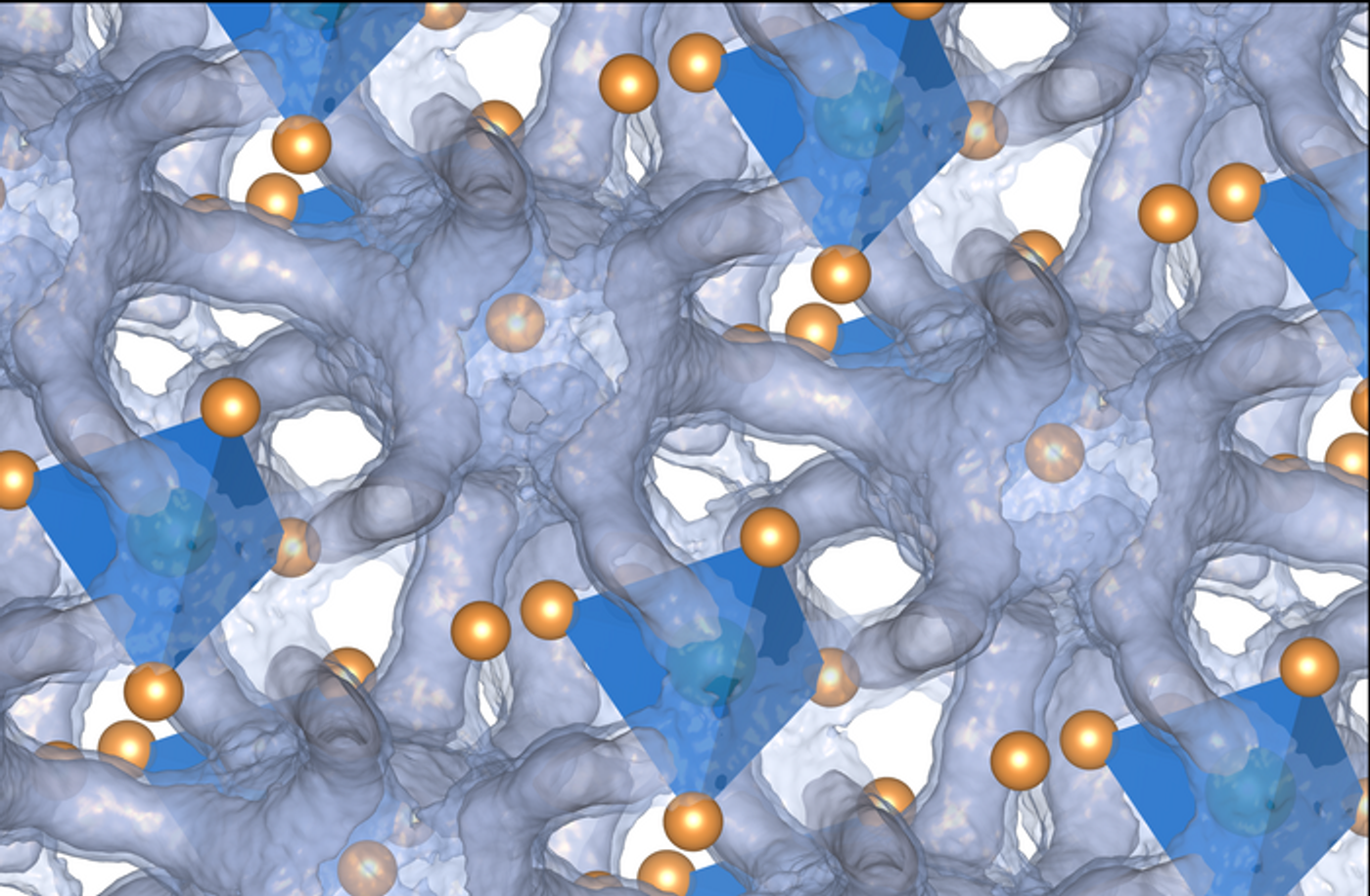Crystal Structures and Machine Learning, Potential New Age of Renewable Energy Storage
A recent study published in Nature Materials examined how machine learning is used to reveal the atomic mechanisms of argyrodites, which could open the doors for a new age of energy storage. This is because argyrodites could be used as thermoelectric energy converters and solid-state battery electrolytes.
Illustration depicting the hybrid crystalline-liquid atomic structure in the superionic phase of selenium. (Credit: Olivier Delaire, Duke University)
“This is a puzzle that has not been cracked before because of how big and complex each building block of the material is,” said Dr. Olivier Delaire, who is an associate professor of mechanical engineering and materials science at Duke University, and a co-author on the study. “We’ve teased out the mechanisms at the atomic level that are causing this entire class of materials to be a hot topic in the field of solid-state battery innovation.”
Renewable energy is becoming increasingly commonplace, including solar panels, electric cars, and hydropower. Until now, energy storage for renewable energy has come in the form of lithium-ion batteries, such technology has its drawbacks, including low efficiency and the potential to catch fire and explode. These drawbacks are derived from the liquid electrolytes within the batteries, which make them sensitive to increased temperatures.
One such candidate is a class of compounds known as argyrodites, whose name comes from a silver lining material, and consists of a stable crystal structure that allow researchers to produce a myriad of combinations since the structure contains two elements with a third element that freely moves throughout the structure.
For the study, the researchers experimented with selenium, which is made of silver and tin, and attempted to reveal its molecular behavior in real-time by bouncing atoms off samples of selenium. In the end, they successfully demonstrated the selenium exhibits flexibility that produces windows for charged silver ions to freely move throughout the structure. The researchers then used machine learning to analyze the data and produce computer models and compared this to the observations made during the experiments.
“It’s sort of like the silver atoms are marbles rattling around about the bottom of a very shallow well, moving about like the crystalline scaffold isn’t solid,” said Dr. Delaire. “That duality of a material living between both a liquid and solid state is what I found most surprising.”
Going forward, the team hopes to use these methods to increase production of replacing lithium-ion batteries in a myriad of applications, to include electric vehicle batteries, which the researchers found one such combination could replace lithium with silver.
What new discoveries will researchers make about crystal structures and renewable energy in the coming years and decades? Only time will tell, and this is why we science!
Sources: Nature Materials, Duke Pratt School of Engineering
As always, keep doing science & keep looking up!









